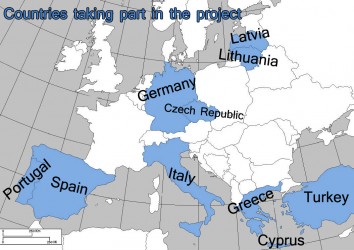Our Comenius team going to this meeting consists of four people: students Kristina Marcinonyte (form 10a), Eimante Arbutaviciute (form 9) and English teachers Jurgita Arbutaviciene and Lilija Mikalauskaite – Dziumajeva. Our trip starts at 5.00 a.m. We are going to Vilnius bus terminal where we take a coach to Riga airport in Latvia. Here we meet our Latvian partners from Lubana Secondary School and then we travel to Dusseldorf/Weeze together. Germany welcomes us with very warm weather, trees and fields dressed in green, blooming tulips and pansies… From Weeze airport it takes us one more hour to get to Bocholt, the town where the last project meeting is going to take place…
Bocholt is a beautiful city of North Rhine – Westphalia, the most populated state of Germany. It is located on the river Aa just 4 km away from Netherlands territorial border. Chartered in 1222 by the bishop of Munster, Bocholt derived its name from Buchenholz, “the beech wood” of its surroundings. It has 75 000 inhabitants and is a centre of textile industry, it also has iron foundries and machine works.


